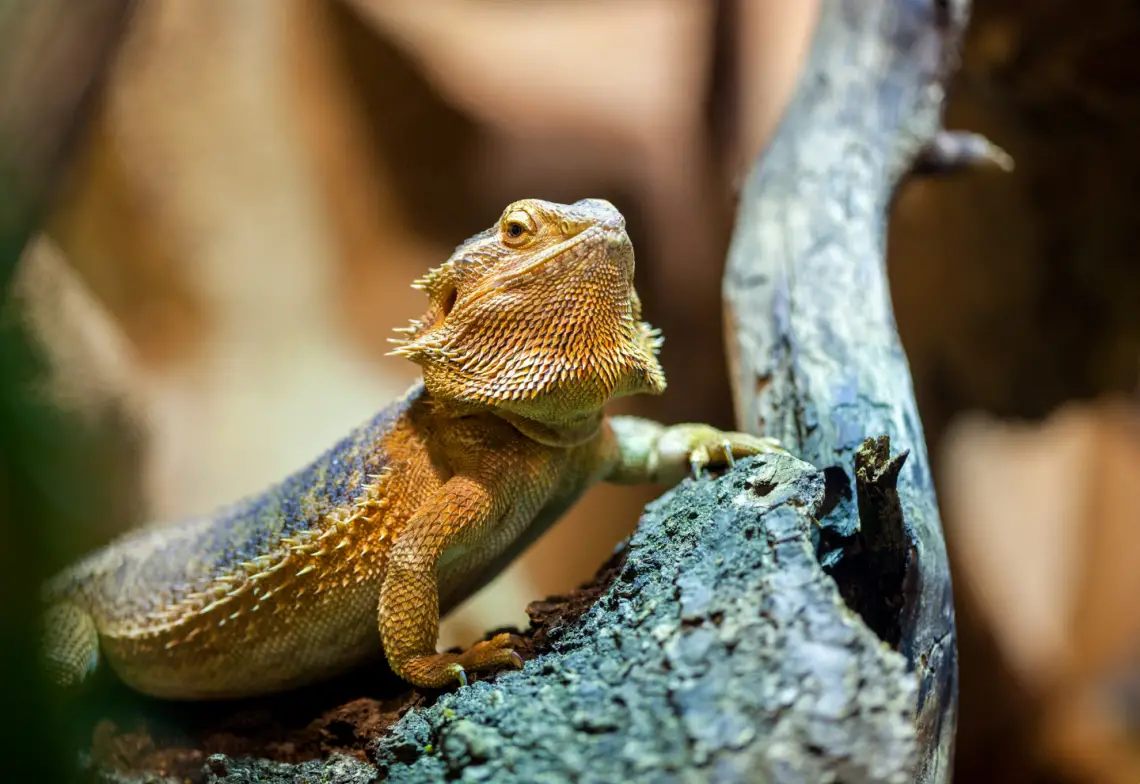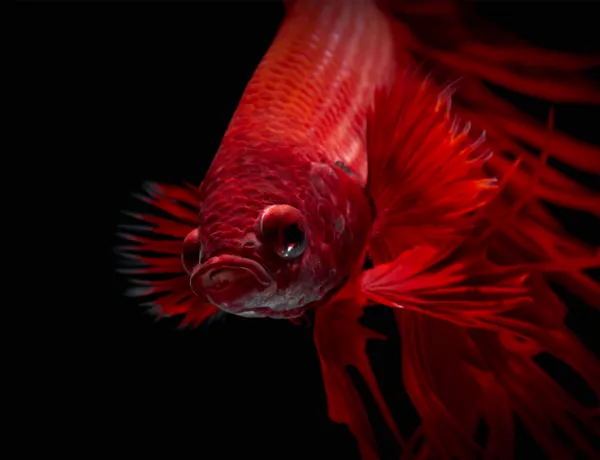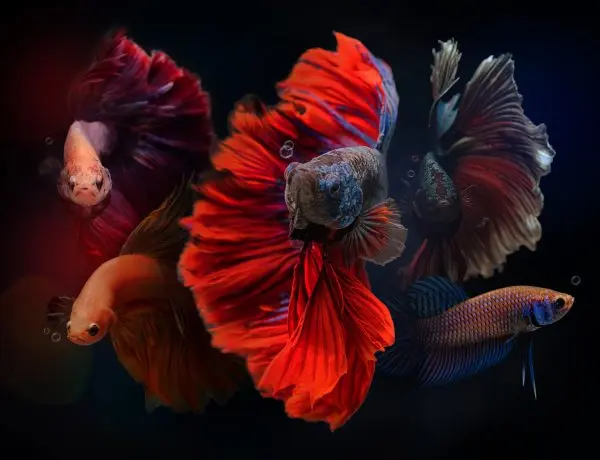Bearded dragons are by far one of the best reptiles to own as pets. Their calm demeanor makes them the ideal companion for both beginners and experienced reptile owners alike. Many factors can influence your bearded dragon’s wellbeing once they move in with you. To ensure a long, healthy life, you must make sure that you care for your beardy in the best way possible.
How to raise a bearded dragon?
When raising a bearded dragon, you must:
- Select a healthy bearded dragon to adopt or purchase
- Set up a well-ventilated enclosure with the appropriate heat and humidity
- Feed them a proper diet
- Spend time with your beardy
- Prevent any illnesses or infections
Although they can be some of the most rewarding pets anyone can own, reptiles can be quite challenging to keep up with. The beardy’s quiet disposition leads many to believe that they do not have to do much to care for this lizard. This is certainly not the case since owning a bearded dragon comes with numerous responsibilities. To ensure you care for your beardy appropriately, follow the guide below on everything you need to know about raising a beardy.
Table of Contents
How to Select Your Baby Dragon
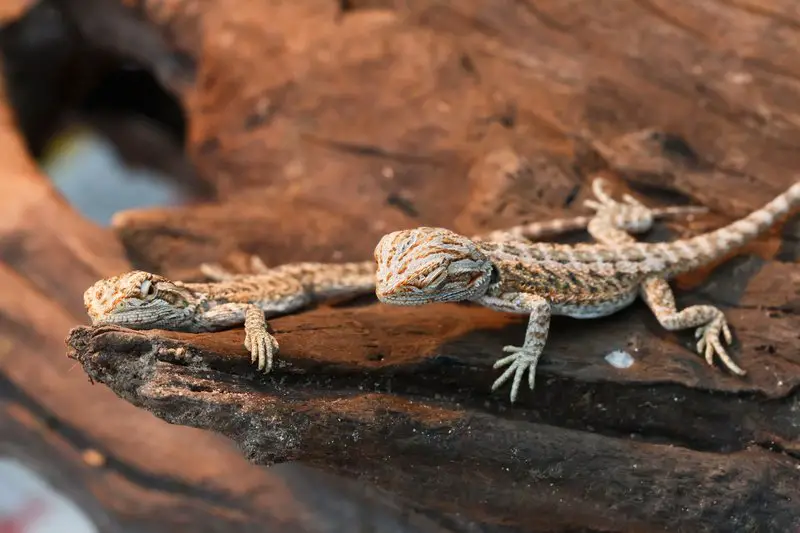
Not everyone gets the opportunity to adopt their bearded dragon at a young age. Meeting your baby dragon for the first time is an indescribably joyful experience, but one that can be quickly soured if your bearded dragon happens to be in poor health. To ensure that this level of joy and affection lasts throughout you and your dragon’s life together, you must keep a few details in mind about picking a healthy baby beardy.
- Look for a baby that demonstrates high levels of mobility, and that is generally very active. It should be moving around its enclosure with bright eyes and visibly high energy.
- Note: Make sure to differentiate healthy levels of high energy versus a neurotic lizard. You don’t want a beardy that’s too easily spooked!
- Identify which lizards are most alert in their enclosure and the goings-on surrounding it.
- Make sure that the bearded dragon’s nose and vent are clean and free of any blockages.
- Don’t be alarmed at a round belly! Though an excessively round body may indicate an impacted digestive system, it might just be a sign that the dragon has been recently fed. Check with the owner or breeder to confirm this.
Note: These criteria will apply to adults as well. For all ages, ensure your dragon is healthy before adopting.
Many people are inclined to choose the “runt” of the litter since it’s small size easily makes it the most adorable of all the baby dragons you may be viewing. You must resist this temptation, as there are many possible health challenges a small bearded dragon may face. Little ones have typically been picked on by the rest of the litter, lending it vulnerable to an array of health problems later down the road.
Lastly, pay attention to the age of the bearded dragon being sold to you. There is a bit of disagreement as to what the appropriate age for buying or adopting a beardy is. However, the general rule is that you want to make sure that it is at least four weeks old. Some advise that ten weeks is the best age, so, if your breeder wishes to wait past the 4-week mark, don’t be too worried. It’s just more time for the dragon to grow and mature!
Setting Up the Perfect Home for Your Bearded Dragon
Ideally, you should have your bearded dragon’s enclosure set up before you bring it home. That way, it will not have to sit around in a temporary container and wait for you to get everything ready. The best way to ensure your beardy is comfortable and secure right away is to have their enclosure “furnished,” so to speak, and warmed up, ready to welcome them upon arrival.
The ideal bearded dragon vivarium should measure at least 47″ L x 23″ H x 23″ W. This is the minimum size requirement, of course, so feel free to make your beardy’s home even bigger! If your goal is to eventually have more than one beardy (with appropriate socializing beforehand), you can acquire a large enough vivarium to house more than one at the beginning.
Just as you would with any other reptile species, you must ensure that the vivarium is appropriately ventilated to avoid any circulation, temperature, or respiratory issues. Ventilation is best maintained when your vivarium is equipped with a mesh screen covering the top of the tank. All other sides should be glass, to keep your beardy from escaping and properly hold heat (100F-107F) and humidity (30-40%).
There is some disagreement as to what the best substrate for housing a bearded dragon might be. As long as your dragon can dig safely without the risk of gut impaction, then you’ve selected an appropriate substrate. Here are some of the most common substrate types you have to choose from when setting up your beardy’s new home:
- Loose particle. This substrate type is quite self-explanatory. It is great for allowing your beardy to move around freely and dig. However, this option does pose the risk of ingestion (and consequential impaction) due to the particle size, and infection, if the substrate were to enter the dragon’s eye or another sensitive area. Loose particle substrates include the following:
- Alfalfa pellets
- Wood chips
- Sand
- Non-particle substrate. Most bearded dragon owners prefer this type, as it poses fewer hazards to both young and mature beardies. It is also markedly easier to clean up during vivarium maintenance. Types of non-particle substrates are:
- Reptile carpet
- Newspaper
What to Know About Keeping Multiple Bearded Dragons in the Same Enclosure
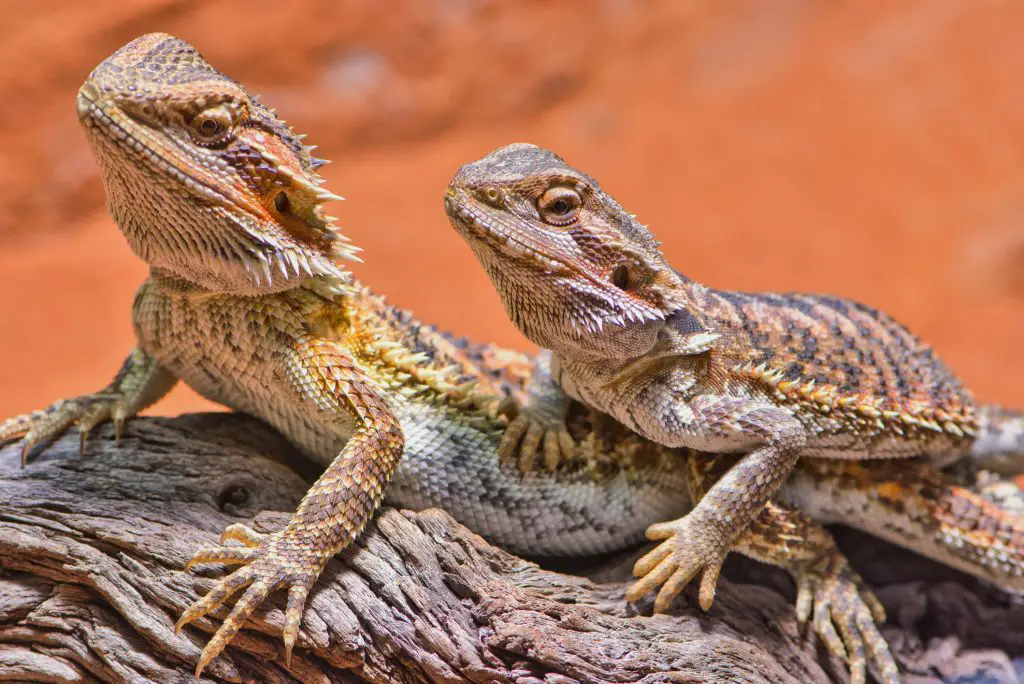
The previously described ideal dimensions of a bearded dragon’s vivarium are suitable for only one dragon alone. If you wish to own any more than that, you will need to provide significantly more space to avoid any negative impacts of overcrowding. Note that raising multiple bearded dragons in one enclosure is a topic of controversy. Only those who have experience with this animal should seek to raise more than one at a time.
There are a few critical elements that factor into the success of keeping multiple dragons together in one enclosure. These elements are as follows:
- Size of the enclosure. When you are preparing a new living space for your dragon, remember that you don’t just want to increase the vivarium size slightly, but at least double it. The minimum tank size is what an individual bearded dragon would thrive in, so you need to give each animal in the enclosure the same minimum space requirements.
- Note: It is recommended that any vivarium that you intend to house more than one beardy in, should be at least 125 gallons in capacity.
- The number of dragons living together. Their sex will partially influence the appropriate number of bearded dragons. You should never house more than one male in a tank together, no matter how much experience with this species you have. Female dragons can be housed together if they are socialized safely. However, you should not attempt to house a female with a male bearded dragon until she is at least breeding age, which is two years old.
- Note: Follow this standard whether you intend to breed your beardies or not.
- Size of the Beardies. You don’t want to incidentally create a situation in which one small beardy will be picked on by the large or average-sized lizards. Make sure they’re all similar in size to avoid any unnecessary aggression.
It is safer to introduce two baby beardies, rather than attempting to get two mature individuals to acclimate to each other. This is especially true if those adults have lived alone their entire lives. Socialize the two (or more) dragons safely and appropriately before moving them in together.
Introducing Two Beardies to One Another
If you are thinking of introducing your bearded dragon to another, follow the steps below to ensure that it is done as safely as possible:
- All bearded dragons being introduced must be of similar size, to avoid conflict or injury.
- If you are introducing males to each other, gather no more than two at one time.
- Confirm that no dragons being introduced in the group are naturally or excessively aggressive.
- Verify that all dragons are in good health. None should be sick or suffering from infections. (Some fatal diseases are very easily transmitted between individual animals. This detail should not be overlooked.)
- Note: Before introducing new bearded dragons, it is best to quarantine the newcomer. This way, you can observe the lizard and make sure that they are not displaying any odd signs of compromised health or dangerous behavioral traits. Quarantine your pet for as little as three months, up to six months. Only handle it with gloves to avoid the potential spread of disease.
As you get ready to introduce them, allow them to see each other from a distance. If the lizards display any head bobbing, biting, or other aggressive behavior, do not allow them to interact. These are clear signs that the interaction will be an unsuccessful one and that they may get hurt. If there is no reaction, you can proceed.
It is best to introduce the dragons in a neutral area, particularly if one has lived alone in its enclosure for an extended period. This precaution will prevent territorial aggression and ensure that the interaction is as safe as possible. You can either place the lizards in a separate enclosure or in a safe place until they acclimate to one another.
What Should You Feed Your Bearded Dragon?
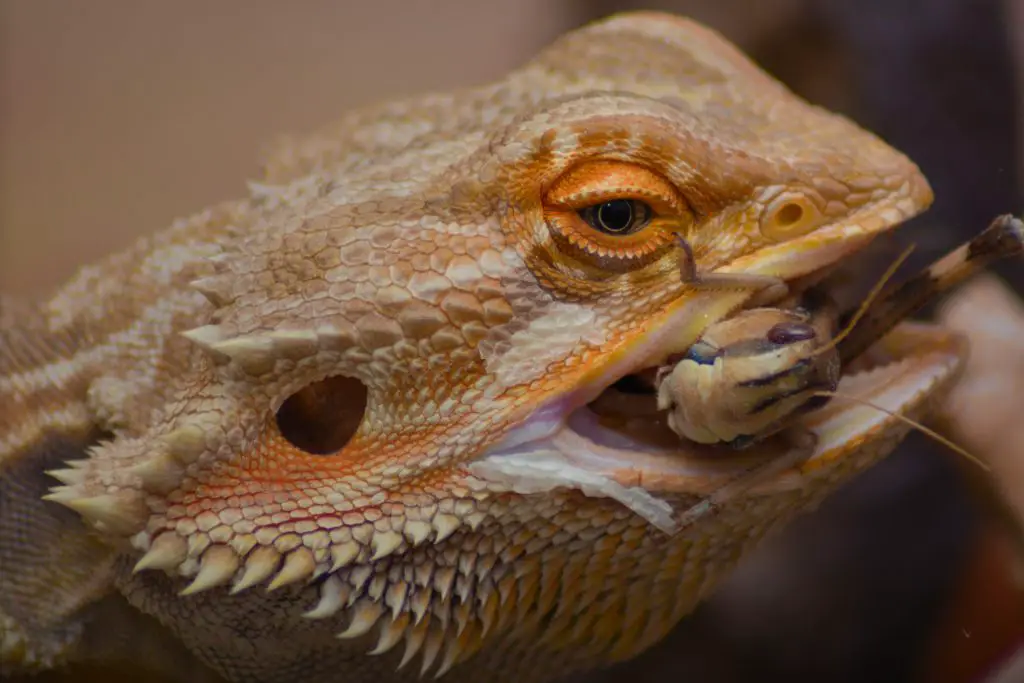
One critical element you should already have established in your beardies’ enclosure beforehand is food. As you decide on the diet you will be feeding your lizard, remember that there will be two distinct categories in your feeding routine: meals and treats. Bearded dragons are naturally omnivorous (they eat both plant- and animal-derived foods) and, in the wild, are known to eat large numbers of insects and plant material daily.
Depending on the age of your beardy, you will need to follow a slightly different feeding routine:
- Juvenile bearded dragons should be fed more than once per day. Young lizards require more protein than adults do, so it would be best to offer them more insects than you would to an adult. Typically you feed babies (3-6 month old) between 3 or 4 times per day. By the time they reach six months of age, they should eat three times per day. As they approach the one-year-old mark, they should be good at only twice per day.
- Adult beardies (18 months or older) should eat only once every day.
For all ages, remember only to give your dragon as much as it can eat in one full day. You don’t want food sitting in the enclosure overnight! This is a formula for bacterial growth, which can lead to a sick lizard and un-hygienic substrate and food containers.
The composition of an ideal bearded dragon diet would follow the guidelines described below:
| Plant-Based Foods (70%) | Protein (25%) | Treats (5%) | What to Avoid |
| Dandelion greens and flowers | Crickets | Papayas | Parsley |
| Mustard greens | Mealworms | Apricots | Broccoli |
| Acorn squash | Waxworms | Tomatoes | Spinach |
| Green beans | Phoenix worms | Bananas | Chard |
| Collard greens | Dubia roaches | Apples | Cabbage |
| Green or red lettuce | Discoid roaches | Berries | Kale |
| Bell peppers | Silkworms | Grapes | |
| Carrots | Hornworms | Cantaloupe | |
| Turnips and turnip greens | Superworms | Geranium flowers | |
| Sweet potatoes | Turkestan roaches | Petunias |
Bonding with Your Beardy

Congratulations! Your bearded dragon is all moved in, and you two are ready to start your lives together. This is a fantastic feeling, and you must do all you can to keep the positive experiences flowing for both you and your new reptile. Most people have gotten so accustomed to the idea of owning other mammals as pets, that it seems quite far-fetched that an owner can “bond” with their reptile.
Despite any misconceptions, bonding with your beardy is imperative to ensure it a long life in captivity. As you two take some time to get to know one another, follow the guidelines below to make all interactions between you and your dragon positive and rewarding.
- Redirect aggression. If your bearded dragon is displaying aggression of any kind, especially at a young age, change the negative interaction into a positive one. Just as you would give a tug toy to a dog that was pulling on clothing, you want to give your beardy something desirable on which to focus their pent-up frustration.
- Note: An excellent option for redirecting anger would be to provide your beardy something to chew on. For example, if it tries to bite you or its mouth becomes agape (open wide), gently place some greens or a wax worm in there. (Replace these items with other treats if your lizard has shown preference before.) Simultaneously stroke the top of the head if the beardy allows it.
- Practice safe handling. You must ensure that you are holding your bearded dragon in a way that is not only pleasing to you but is comfortable and secure for the lizard. Read the details below on how to hold your dragon properly.
- Slide your index finger underneath the lizard’s chest (between the neck and the front legs). As the lizard begins to raise up, slide the rest of your fingers underneath for maximum support.
- Lay the lizard flat on your hand, belly down.
- Position your thumb at the nape of the neck – where it can’t be bitten and still provides support.
- Hold the lizard securely, even when it’s squirming! Gently pet it until it is time to put it down.
- Give your beardy a strong sense of security. Your dragon should always feel safe and comfortable with you and in their enclosure, no matter what. One often overlooked aspect of security is the presence of things to hide behind in the enclosure. If your lizard gets spooked, is there anywhere to retreat to?
- Note: Providing your lizard with security also means taking every precaution to prevent them from falling out of your hands. Whether that occurs by you accidentally dropping them or the beardy wriggles out of your grasp, you must always have a blanket, pillow, or other soft object positioned beneath you to prevent injury. (You might also hold the lizard over the enclosure, or sit down and hold it over your lap.)
- Only hold your beardy with clean hands. Wash your hands before you attempt to hold your bearded dragon. Why? You don’t want to smell like anything that might cause alarm or respiratory problems.
- Exercise patience. Your bearded dragon isn’t always going to want to socialize when you do. If it feels like being left alone – signaled by excessive avoidance and attempts to jump out of your grasp, let it be. Few things are more traumatizing to a reptile than being forced to interact with humans when all it wants is to bask in its enclosure.
Through all of this, remember to prevent your bearded dragon from exclusively associating your hands with being picked up. This can backfire on your ability to bond with it since being carried can be stressful for your beardy at times. Hand-feed treats to your bearded dragon occasionally so that it learns to associate your hands entering their enclosure with something joyful (and yummy).
Activities You Can Do with Your Bearded Dragon
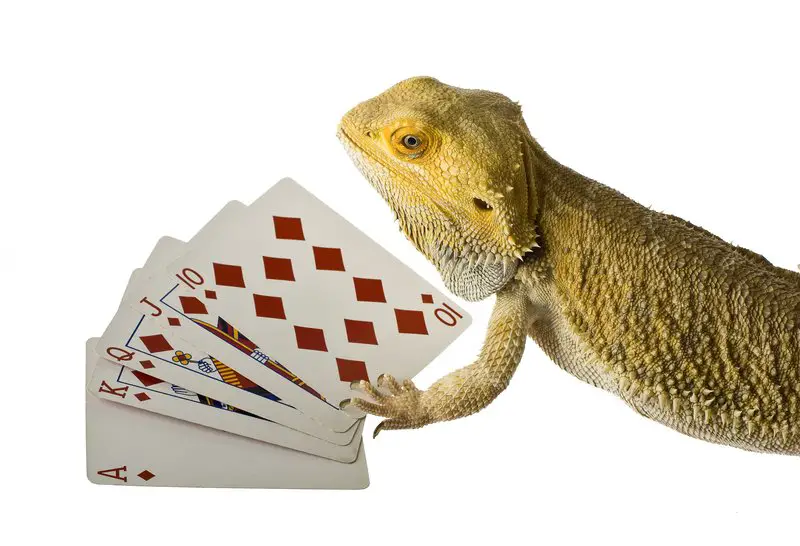
Bearded dragons are some of the most docile animals to have as pets. Due to their mellow temperament and small size, they make great companions for low-energy activities in the home. After you’ve fed your dragon a few treats, you can take it out of the enclosure and bring it into the living room with you to sit on the couch and watch some TV.
Beardies love to climb and hang onto clothing when they’re allowed, so even if you’ve got some light cleaning to do, you can safely place your dragon on your shoulder and take them for a ride. Those who enjoy reading, board games, and other quiet activities will find that their bearded dragons very much enjoy hanging out with their humans during these times.
Although these things may seem uninteresting to most humans, a bearded dragon will find them quite engaging. As you spend time with your beardy day-to-day, observe its behavior when you play music or when the TV is on. You will notice that it is highly responsive to the noise and the moving images.
Even when just laying on your chest at home, they are having a grand time. (Note: It’s especially great for you to sit in one area and allow your bearded dragon to move around freely. This way, they can maintain a sense of control and move at their own pace.)
Common Ailments to Be Aware of in Bearded Dragons
Knowledge is half the battle when it comes to matters of your bearded dragon’s health. To appropriately protect them from potential diseases and harmful physical conditions, you must be aware of what ailments are common in this species. Such prior knowledge should not serve to make you paranoid but only contribute to your ability to take precautions for your pet’s safety and health.
The most common medical conditions that arise in bearded dragons is:
Metabolic bone disease (MBD)
MBD, or secondary nutritional hyperparathyroidism, as it is known to veterinary professionals, most often affects bearded dragons that are two years old and younger. This condition results from a poorly balanced diet, particularly one that is low in Vitamin D3 or calcium, with excessive phosphorous.
How to Prevent It
It is recommended that you feed your beardy a diet with a 2:1 calcium to phosphorous ratio to prevent this condition.
Signs & Symptoms
- Hind limbs will swell
- Swelling of the lower jaw
- Bones of the face and jaw will soften (this symptom is known as “rubber jaw”)
- Muscle tremors (late-stage)
- Seizures (late-stage)
- Lethargy (late-stage)
- Loss of appetite (late-stage)
Parasites
Pinworms are the most common species to inhabit the intestinal tract of bearded dragons. Ticks and mites are also regular, unwanted companions of pet beardies.
Maintaining a consistent vivarium cleaning routine is a great way to keep parasites away from your reptile.
You may not observe any external symptoms of this infection, but upon a visit to the vet, the worms or eggs can be detected in the stool.
Infectious stomatitis
This condition is also referred to as “mouth rot.” Fortunately, it does not occur in bearded dragons as often as it does in other domesticated lizard species. Mouth rot is the result of a bacterial infection of the reptile’s jawbone or gums.
The best way to avoid such an infection is to choose the appropriate substrate and prevent the enclosure’s temperature or humidity from getting too high.
- The infected site may hemorrhage on the gums.
- Gums will become swollen.
- Jawbone may become swollen.
- Mucous begins accumulating in the mouth.
Respiratory infections
A wide range of organisms may cause infections of this kind due to a poorly kept enclosure. A lizard may develop a respiratory condition after being infected by bacteria or viruses; however, poor respiratory health can also be attributed to fungi and parasitic infections.
Keeping a regular cleaning schedule for the vivarium will surely prevent this ailment from developing.
- Sneezing
- Discharge from the noes and/or eyes
- Lethargy
- Open-mouthed, shallow breathing
- Decreased appetite
Atadenovirus (previously known as “adenovirus”)
This is most often observed in young bearded dragons, although mature individuals can be affected as well. This virus causes severe gastrointestinal distress and hepatitis. This viral infection is spread by:
- Being in contact with an infected dragon (this is how it spreads through breeding colonies)
- Being in contact with tools that have been used to treat infected bearded dragons
- Mothers may pass it on to their babies
Research your breeder or vendor thoroughly before purchasing a bearded dragon. Because this virus can spread rapidly throughout a breeding colony, a breeder with poor cleaning and rearing practices may wind up selling you a diseased lizard. Secondly, avoid socializing your bearded dragons with other lizards that appear to be weak and sickly, or that inexplicably haven’t eaten for an extended period.
- The bearded dragon may appear to be extremely weak
- Total loss of appetite
- Paralysis
- Death
Keep this information in the forefront of your mind as you care for your bearded dragon and watch it grow. You want to provide the absolute best experience possible for your animal, and the most reliable way to do that is to ensure it is happy and healthy at all times. Have your bearded dragon checked at the veterinary office at least once a year – don’t wait until something’s wrong to have it seen!
Effective prevention against all these conditions can only be achieved when you are aware of your animal’s health status. If you are not noticing something at home, your vet can alert you to any abnormalities, even those that are not visible to the naked eye. This is your best shot at raising a healthy bearded dragon and providing a well-balanced diet and a regularly cleaned enclosure.

